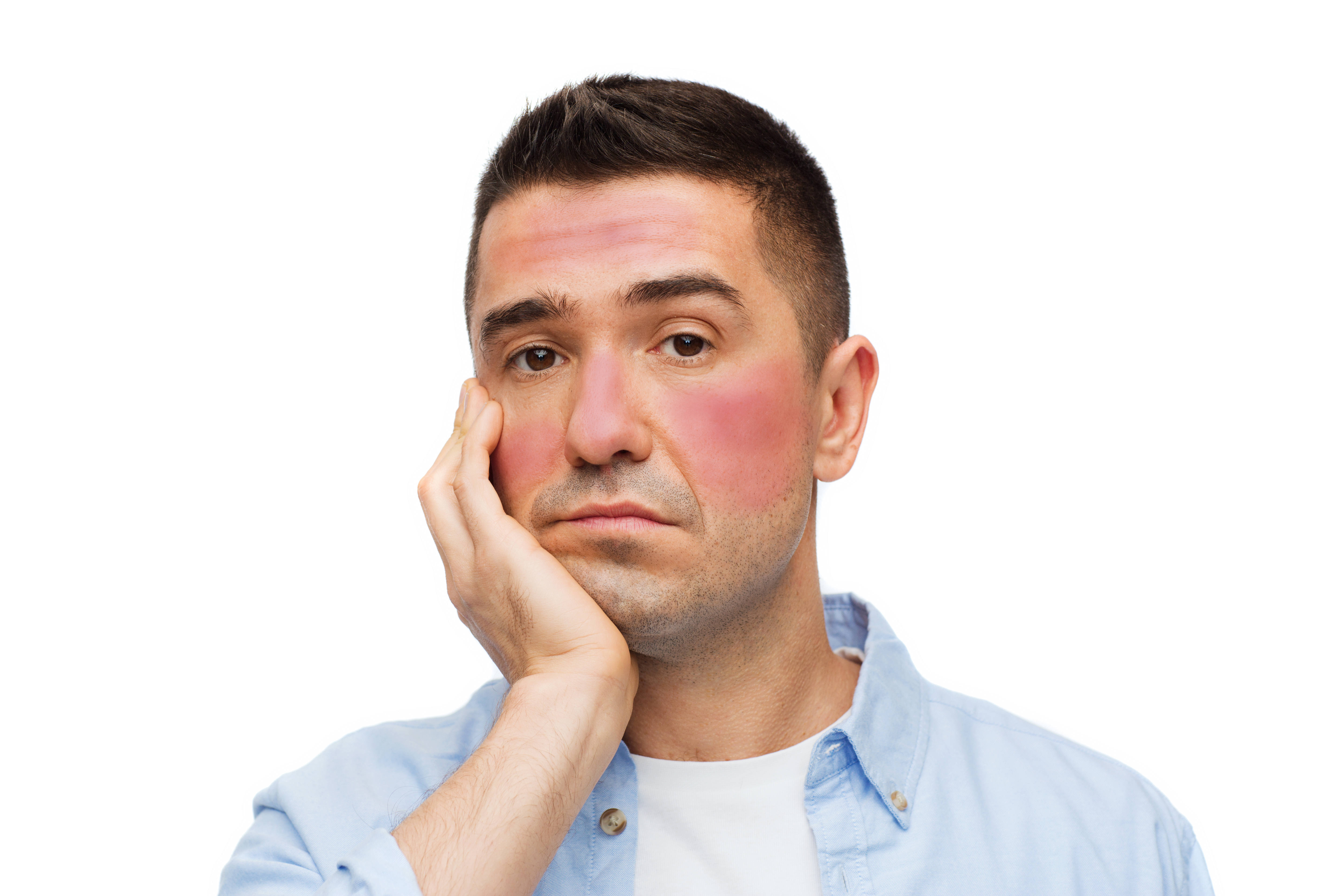 Rosacea is a common skin condition that most commonly affects the face and is characterized by diffuse redness, easy flushing as well as broken blood vessels and acne-like lesions.
Rosacea is a common skin condition that most commonly affects the face and is characterized by diffuse redness, easy flushing as well as broken blood vessels and acne-like lesions.
“It’s really a spectrum,” says Dr. Miriam Hanson, board certified dermatologist and cosmetic skin care expert in Austin, Texas. “We see everything from rosy cheeks to bumpy, thickened skin with enlarged sebaceous glands.” Dr. Hanson does note one common denominator amongst the rosacea patients she treats – patients are often extremely self-conscious about their appearance.
“While there has been a lot of research and theories, the exact cause of this disease is still not known,” says Dr. Adam Mamelak, board certified dermatologist at Sanova Dermatology. “For that reason, many of the treatments we have target factor associated with rosacea, but not necessarily things causing it.” For example, Dr. Mamelak explains that there are a number of antiseptic and antibiotic preparations that have been shown to be effective in alleviating the symptoms of rosacea. These agents are act against Deomdex and other microorganisms that might aggravate this condition. Other treatments, like topical Brimonidine, anti-hypertensive agents as well as laser therapy help decrease blood flow and constrict blood vessels in the skin, decreasing the flushed appearance.
“Many feel that rosacea also has a neurogenic component,” says Dr. Hanson. That is, stimuli from the nervous system can directly affect a patient’s rosacea. This is why emotional responses like feeling embarrassed or angry can trigger a flare. In fact, the nervous system has been observed to affect blood vessels, inflammation and even sebaceous activity in the skin. And this is where Botox comes in…
Smoothing Out The Wrinkles Of Rosacea
“We all know that Botox relaxes muscles in the skin. This is how it softens our lines of motion and eliminates wrinkles that result from muscle definition in the skin,” says Dr. Hanson. “The way it actually does this is by blocking the nerve stimulus to the muscle, prohibiting us from contracting that muscle as much or as strongly.” But Botox has been used for other purposes.
“We can also use Botox to block the nerves that stimulate our sweat glands for patients who have hyperhidrosis, or excessive sweating,” explains Dr. Mamelak. Dr. Mamelak was one of the first physicians to recognize the use of Botox in chromhidrosis, another medical condition that produces abnormal sweating. These observations were published in the Journal of Dermatologic Surgery, a highly respected medical journal. “By interfering with nerve activity at a localized level, we can affect a number of things in the skin.”
Reddy for Botox?
In a 2012 study published in the Journal of Drugs in Dermatology, medical investigators injected 13 people who suffered from rosacea with micro-injections of diluted Botox. An average range of 8 to 12 units of Botox were administered in each patient’s cheek. Decreased redness, flushing, and inflammation were noted within one week of the injections and persisted for up to three months.
“It is a very exciting study,” says Dr. Hanson. “It shows that there are other treatment options for rosacea patients with severe or persistent disease. It also shows that there are other therapeutic targets that we can go after to get these patient’s skin under control.”
Contact
Looking for treatment options to get your Rosacea under control? Contact us today and let our dermatologists customize a treatment for you!
Join Us
